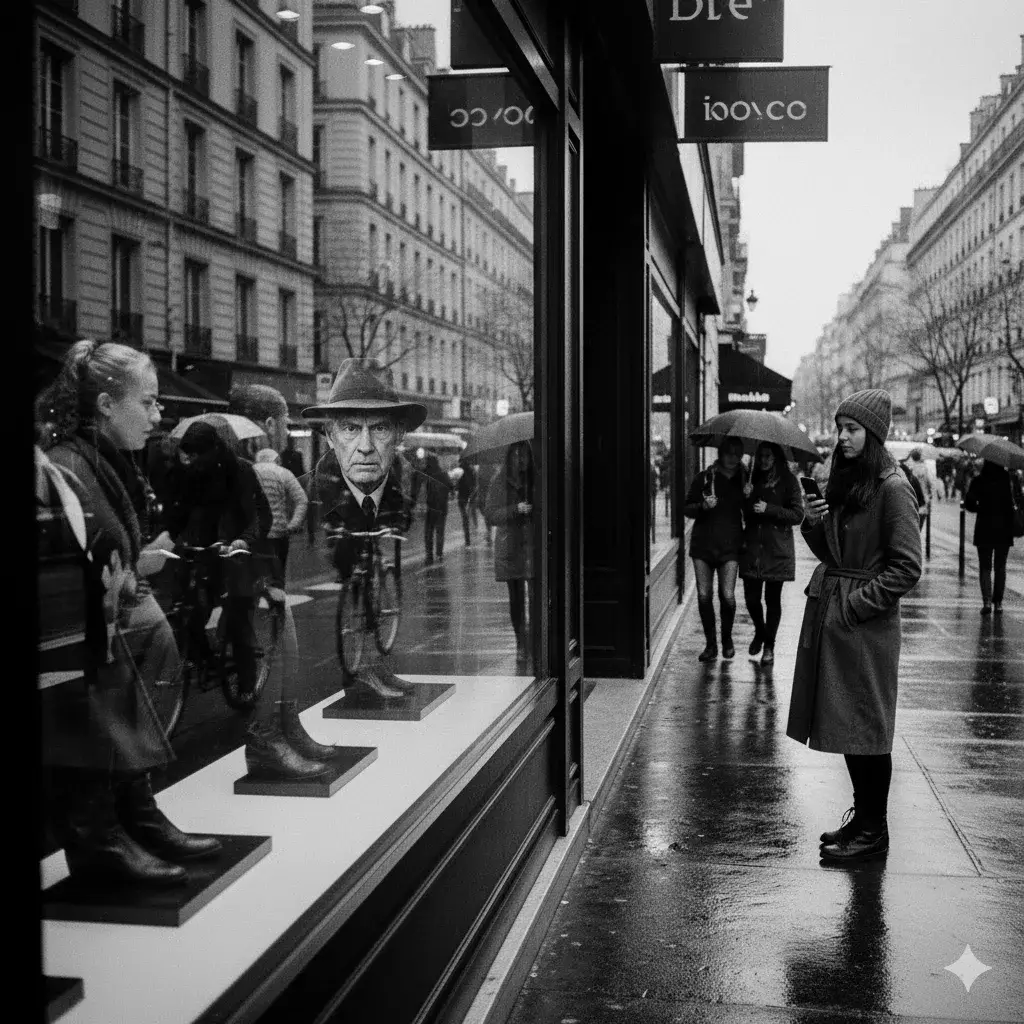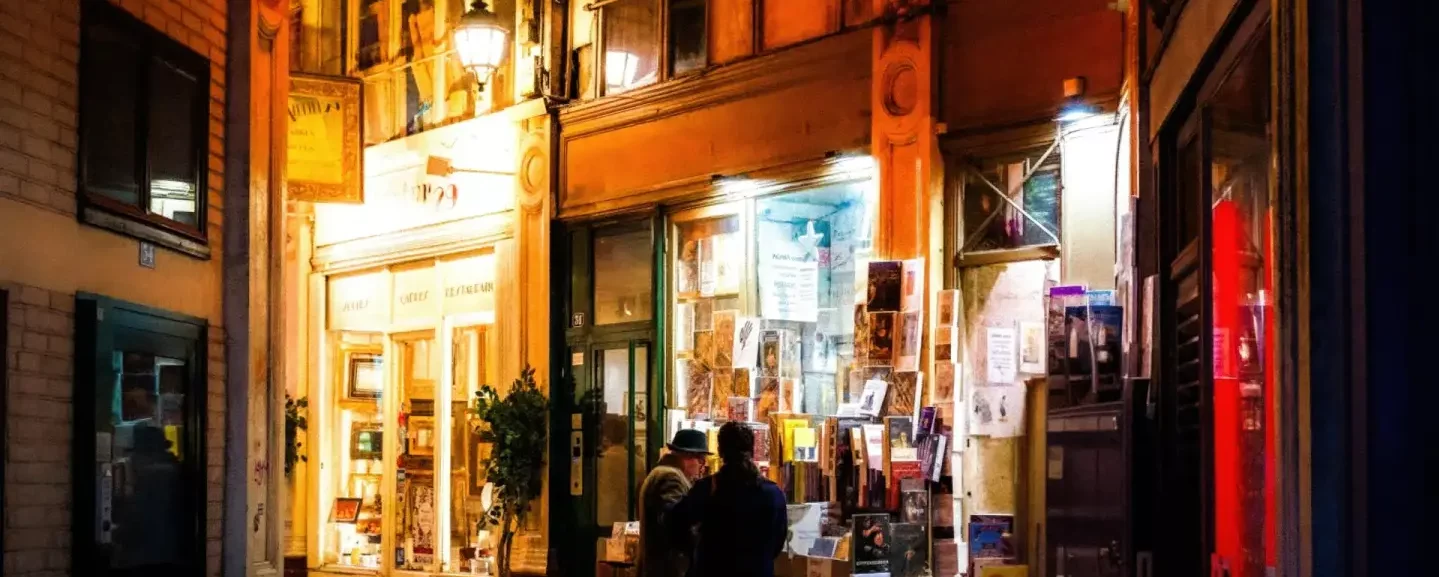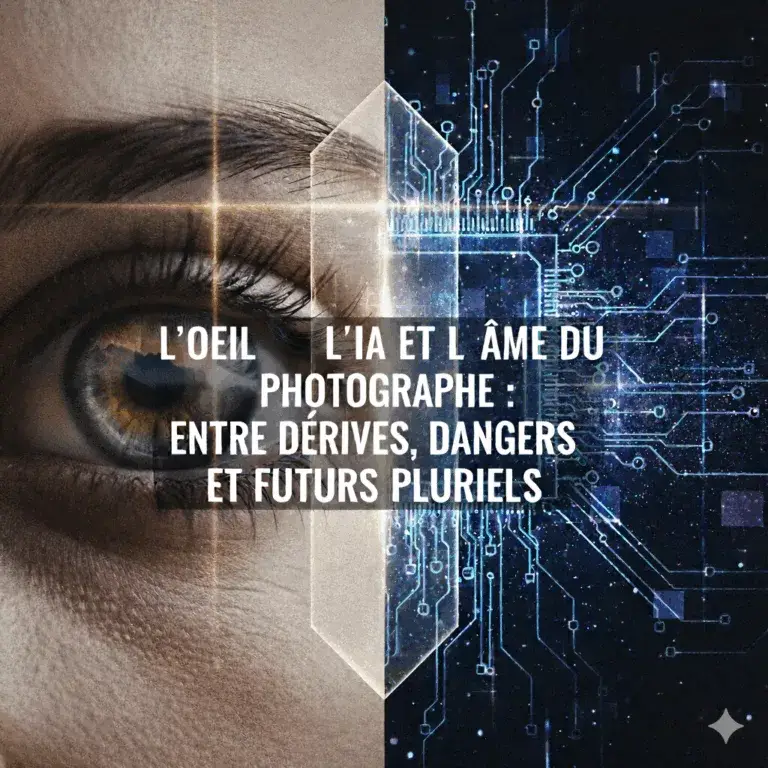
Overview: More than a mere genre, street photography is a pulse. It is the art of capturing the unforeseen, the poetry of everyday life, and the social theater unfolding on the asphalt. Born with the technology that allowed cameras to leave the studio, it is now both more accessible than ever thanks to smartphones, and more contested than ever in the name of privacy. Between historical document, artistic expression, and ethical questioning, street photography serves as the seismograph of our societies.
I. The Origins: The 35mm Revolution
The roots of street photography delve into early 20th-century Paris, with figures such as Eugène Atget, who methodically documented a disappearing “Old Paris”. However, his approach was more documentary than modern “street photography”.
The true birth of the genre coincided with a technological revolution: the advent of compact and lightweight cameras, notably the Leica in the 1920s-1930s. Utilizing 35mm film (originally intended for cinema), it was fast, discreet, and allowed photographers to blend into the crowd.
This was the era of the founding masters. Henri Cartier-Bresson theorized the “decisive moment,” that fraction of a second where geometry, light, and subject align perfectly. In the United States, photographers such as Walker Evans documented the Great Depression, while the post-war period saw the emergence of the American school: Robert Frank (The Americans), with his critical and raw gaze; Garry Winogrand, who captured the chaotic energy of urban life; and Diane Arbus, who turned her lens towards the marginalized. The history of street photography is a black and white chronicle, often grainy, always humanistic.
II. The Present: Digital Ubiquity and Saturation
Today, the Leica has been replaced by the smartphone. Street photography has become radically democratized.
- The Universal Tool: The iPhone (or any other modern smartphone) is the quintessential street tool. It is always present, completely discreet (no one notices a phone), and instantly connected.
- The Global Gallery: Platforms like Instagram and Flickr have become the new galleries. A “moment” captured in Tokyo can be seen in New York a second later.
- Saturation: This democratization comes at a cost. The world is flooded with images. The pursuit of the “decisive moment” is sometimes replaced by “burst mode,” and curation becomes more important than the capture itself. Distinguishing a work of art from a mere snapshot becomes a major challenge.
The present is paradoxical: everyone is a street photographer, yet the visual noise is deafening.
III. Strengths and Weaknesses: The Anatomy of a Genre
Street photography derives its relevance from its internal tensions.
Strengths and Qualities:
- Authenticity: It is the quintessential “unposed” genre. It captures authentic emotions, interactions, and situations.
- Historical Value: It is a time capsule. Street photos from the 60s tell us more about fashion, architecture, and social customs than many history books.
- Accessibility: It requires neither a studio, nor models, nor expensive equipment. Just an eye, patience, and a sidewalk.
- Universality: A glance, a smile, a solitude in the crowd are universally understood themes, transcending cultural barriers.
Weaknesses and Challenges:
- Suspicion: The street photographer is increasingly viewed with suspicion. In a post-9/11 world and in the era of mass surveillance, a person with a camera is often seen as a potential threat.
- The Ethics of the Gaze: Where does observation end and voyeurism begin? Photographing vulnerable individuals (homeless, children) raises complex ethical questions. The genre can border on exploitation if the photographer merely “takes” an image without empathy.
- The “Cliché”: The genre is so popular that it is saturated with its own tropes (the reflective puddle, the red umbrella in the gray crowd, etc.). Originality is difficult to achieve.
IV. The Legal Conundrum: Right to Image and Freedom of Expression
This is the most pressing challenge for the genre. Legislation varies drastically from one country to another.
The Case of France (and Europe): France is one of the strictest countries. The right to one’s image is a component of the right to privacy (Article 9 of the Civil Code).
- Taking the shot: It is generally legal to photograph in a public space.
- Dissemination (Publication): This is where things become complicated. If a person is identifiable and constitutes the main subject of the image, its publication (on a blog, Instagram, in a gallery) requires their explicit authorization.
Exceptions and the “Gray Area”:
- The Right to Information: If the photo illustrates a news event (a demonstration, a festival), the right to one’s image may yield to the freedom of information.
- “Incidental” Person: If the person is “lost in the crowd” or is merely an element of an urban landscape (for example, a photo of the Eiffel Tower with tourists in the distance), their authorization is not required.
For the street photographer, this is an insoluble dilemma. The very essence of the genre is spontaneity. Requesting authorization before the photo transforms it into a posed portrait. Requesting after breaks the magic and risks refusal. Many French photographers therefore publish their works in a “legal gray area,” hoping not to be prosecuted, or by focusing on silhouettes, backs, or compositions where the human element is a graphic component rather than an identifiable subject.
Comparison (United States): In the United States, the situation is reversed. The First Amendment (freedom of expression) takes precedence. Anyone in a public space does not have a “reasonable expectation of privacy” (reasonable expectation of privacy). It is therefore legal to photograph and publish (even for artistic or commercial purposes) the image of strangers without their consent.
V. The Future: Between AI and Hyper-Surveillance
The future of street photography is shaped by two contradictory technological forces.
- The Culture of Surveillance: The proliferation of surveillance cameras, facial recognition, and the public’s heightened awareness of their image make the practice more fraught. The photographer is himself under surveillance.
- Artificial Intelligence: This is the existential challenge. AIs like Midjourney or DALL-E can now generate hyper-realistic “street photographs.”
- Challenge to Authenticity: If an AI can create a perfect “decisive moment,” what is the value of one captured by a human? Street photography has always relied on its pact with reality.
- Tool for the Artist: AI can also become a tool (advanced post-processing, inpainting to remove elements), further blurring the line between the captured and the created.
The future of the genre could split: on one side, an increasingly difficult and risky “pure documentary” practice; on the other, “conceptual street photography” using AI to comment on reality rather than simply capturing it.
Conclusion
Street photography is the art of the tightrope walker. The photographer walks a fine line between the visible and the hidden, the artistic and the mundane, the legal and the forbidden. It was born from a technological advancement (35mm), was revolutionized by another (the smartphone), and is now challenged by a third (AI).
Despite saturation, suspicion, and legal obstacles, its strength remains intact: it is a fundamental humanistic quest. In an increasingly individualistic and digital world, the act of carefully observing others in public spaces is, perhaps, more essential than ever. It is an act of connection, a reminder that life, in all its unpredictable complexity, unfolds primarily in the street.
This post is also available in:
French

